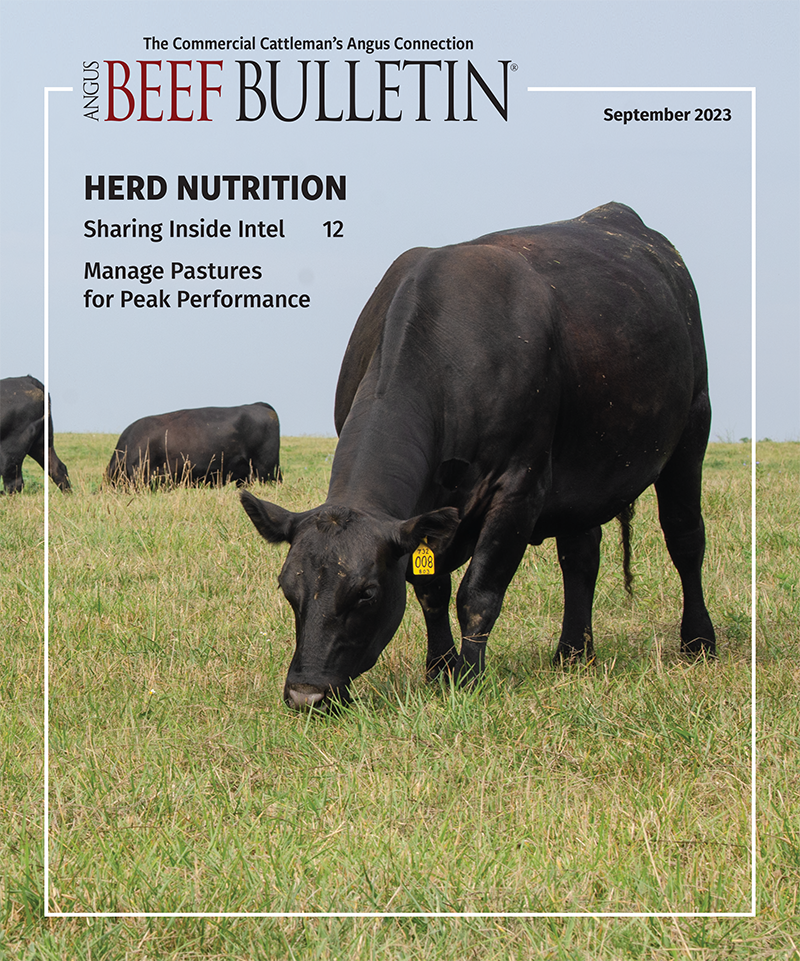
Market Closeout
The role of the market.
There are about as many opinions on marketing cattle as there are cattle producers. In many respects this is understandable; ranches don’t tend to fit into distinct boxes. A lot of variation exists in terms of genetics, management, scale and environment. Each of those factors has an effect on an individual operation’s marketing plan and goals.
There are many components to marketing, but they tend to get divided into two categories: market timing and marketing strategy.
Market timing
Market timing has the potential to have a pretty big effect on the bottom line, and it is a combination of both art and science. Timing the market is about taking advantage of wide, broadly known trends and/or anticipating changes in market drivers.
Yet market timing by its own definition is a short-term type of decision horizon: decisions like selling on a June video sale or selling in October, decisions about selling cull cows in November vs. January, or the decision on whether to retain heifers or sell cows.
Timing decisions rarely drive genetic, management or marketing plans over the long term.
Develop a market strategy
The second component of marketing is developing a marketing strategy or plan. This tends to be more consistent and has a more significant effect on profitability over time.
Most operations don’t have a marketing plan. They either tend to do things like they have always done, or they simply make adjustments based on suggestions from the marketing professionals who help market their cattle. Most ranchers wouldn’t list marketing as one of their true management gifts, or even one of their priorities. Honestly, when they have so many things on their agenda, marketing isn’t something that is front and center more than a couple times each year.
So, how does one go about putting together a marketing plan? Conventional wisdom says producers should do an analysis of the marketplace and make an educated guess on where it is heading. Then determine how your operation fits into those targets and devise a marketing plan that capitalizes on your strengths and minimizes your weaknesses. Obviously, there is nothing wrong with that advice, but the targets are pretty well-defined and understood. In the end that will only do so much to differentiate your product, which is ultimately the goal of most marketing plans.
I would suggest a simple six-question process.
- 1. How have you marketed cattle in the past?
- 2. How are you marketing cattle today?
- 3. How would you like to market your cattle in the future?
- 4. What characterized your genetics and management in the past?
- 5. How would you describe your genetics and management today?
- 6. What genetics and management will you need to be successful in the future?
Obviously, these are not difficult questions to answer. When you answer them, you have a good understanding of where your program currently is, as well as what changes and progress you have made to get there, and you will have a clear vision of where you want to be. From there it is a fairly easy process to determine the best path to reach your goal.
For those of you looking for more information on factors that determine the value of feeder cattle, visit the American Angus Association’s website (www.angus.org) and read the white paper released at the 2023 Feeding Quality Forum. Watch for a story sharing highlights of the white paper in the October Angus Beef Bulletin. The white paper provides valuable background information for making your marketing plan.
Editor’s note: Troy Marshall is director of commercial industry relations for the American Angus Association.



